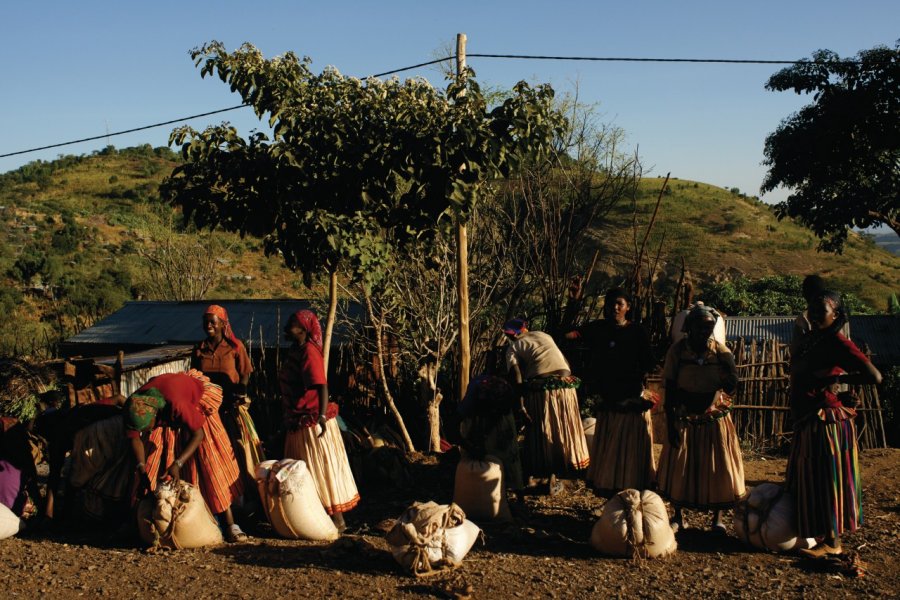Travel Guide Konso
Find an accommodation
Advertising
Altitude: 1,650 m. Population: 10,000. Distance from Addis Ababa: 590 km. Arba Minch, the gateway to the South, marks the end of the tarred network, and it's a good place to top up your supplies if necessary. The recently consolidated track takes two to three hours to reach the village of Konso, 88 km to the south. This small town was developed under communist rule in the 1970s. It is best known as an important cultural center, thanks in particular to the Konso villages, rich in religious and cultural traditions, but also to agriculture. Every hectare of this vast plain has been cleared and given over to agriculture. The Konso are ingenious. Techniques to limit rainfall runoff, combined with the mixing of crops in the same field, optimize the use of rainwater. The low rainfall (550 mm per year), spread over two short seasons (February and September), is sufficient to produce cotton, coffee, cereals (mainly sorghum and maize), legumes (cowpeas, cowpeas) and tubers (including cassava). The main source of vegetables is moringa, a tree with a light trunk that is omnipresent in the landscape, and whose leaves are eaten boiled like spinach.The Konso fortified villages ( paletas), classified by Unesco. Scattered across the region's 55 km2, they were designated a Unesco World Heritage Site in 2011. They have been built over twenty-one generations - almost four hundred years! They have also been listed for their unique culture, threatened by the advance of modernity. These villages are distinguished by their remarkable architecture of stone terraces and fortifications of several concentric walls - up to six protective barriers in some villages, rising to a height of 5 m as you approach the center - erected for their strategic and defensive value. The moras, at the heart of fortified villages, continue to play an important and central role in the life of Konso country, where young village boys sleep once they reach puberty and where social and local life is played out. Some fortified villages have as many as seventeen moras.Markets. Although most of the village's residents come from the north, market days on Mondays and Fridays bring together Konso, Tsemaï and Borana from Yavelo. Around the stalls, where fruit and vegetables stand side by side with Konso pottery and fabrics, as well as a few pieces of costume jewelry, shepherds, their weapons slung over their shoulders, come here to barter their livestock for grain. The women, swathed in black tulle, wear ecru cotton skirts with several ruffles and adorn themselves with pearl necklaces and aluminum bracelets. Like their children, almost all wear T-shirts whose similar pattern, visible throughout the region, suggests that they have been bought in bulk or donated by missionaries who have come to instill some principles of modesty in these pagan populations long accustomed to living bare-chested. The Konso take advantage of market days to gather in the small establishments lining the market square, where sorghum beer(chaka) is served in gourds. On Mondays and Thursdays in Dokato, there's a market lined by numerous tedj bet, the tedj being more popular with northern traders.
What to visit Konso?
Advertising
Suggested addresses Konso
Weather at the moment
Advertising
Organize your trip with our partners Konso
Transportation
Book your plane tickets
Car Rental
Boat rental
Accommodation & stays
Find a hotel
Holiday rental
Find your campsite
Tailor-made trip
Immersion travel
Services / On site
Activities & visits
Find a doctor
Konso travel inspiration
Find unique Stay Offers with our Partners
Pictures and images Konso
Other destinations nearby Konso
5 km away
100 km away








